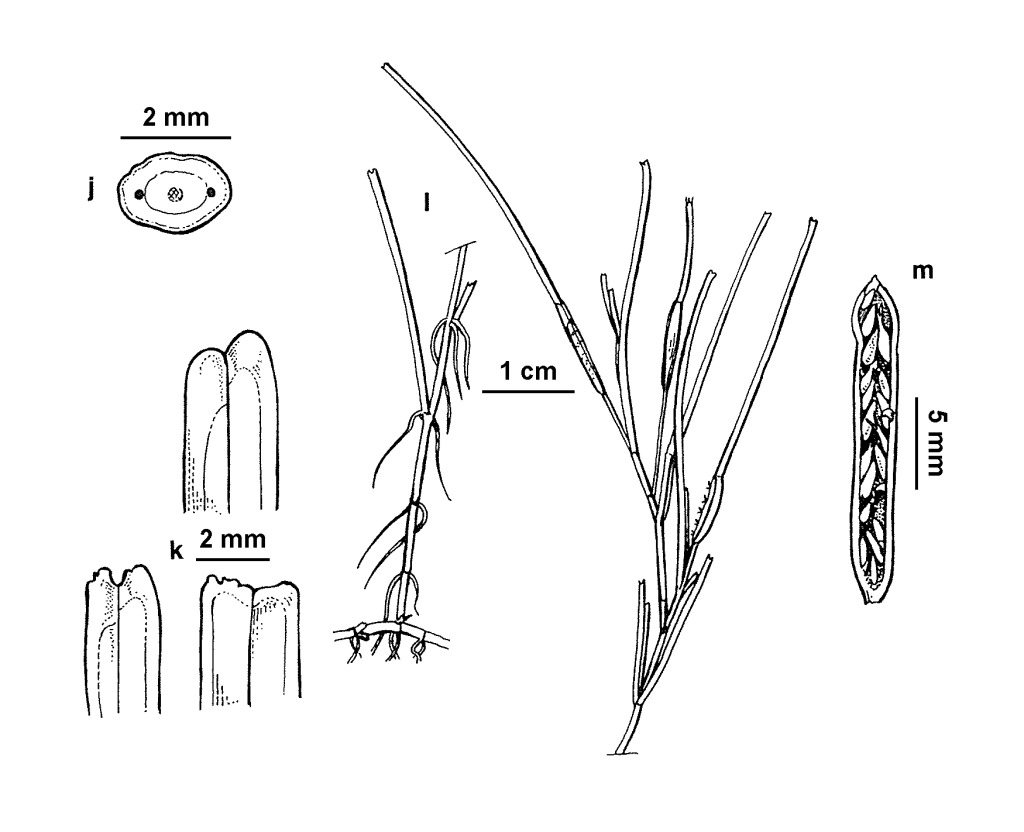Zosteraceae
Marine, perennial, submerged herbs, monoecious (Victorian genera); rhizomes well differentiated, rooting at nodes; branches slender. Leaves alternate, distichous, sessile; lamina linear, base sheathing with ligule and auricle present; scales present in each leaf axil. Inflorescence with flowers borne on a flattened spike-like axis enclosed within a modified leaf-sheath. Flowers small, unisexual; perianth absent, male and female 'flowers' arranged alternately in 2 longitudinal rows on axis (Victorian genera). Male 'flowers' with 2 free stamens which are ± enclosed by bract-like outgrowths of the flattened axis; anthers joined at their bases by a narrow connective, pollen filamentous. Female 'flowers' with 1 carpel; ovary ± cresent-shaped (in outline) with a short simple style terminating in 2 stigmas. Fruit small, drupe-like, 1-seeded; seed without endosperm.
3 genera with c. 21 species world-wide; Heterozostera and Zostera occur in Victoria.
Tomlinson (1982) discusses the inflorescence and the two main interpretations of the 'flowers'. This treatment follows that of Kuo (2011) after den Hartog & Kuo (2006). Pollination occurs within the water. The filamentous pollen floats through the water to the stigmas of the female 'flowers'.
Conn, B.J. (1994). Zosteraceae. In: Walsh, N.G.; Entwisle, T.J., Flora of Victoria Vol. 2, Ferns and Allied Plants, Conifers and Monocotyledons, pp. 163–165. Inkata Press, Melbourne.
 Spinning
SpinningKuo, J. (2011). Zosteraceae. In: Wilson, A., Flora of Australia, Vol. 39, Alismatales to Arales, pp. 135–140. CSIRO Publishing, Collingwood.



